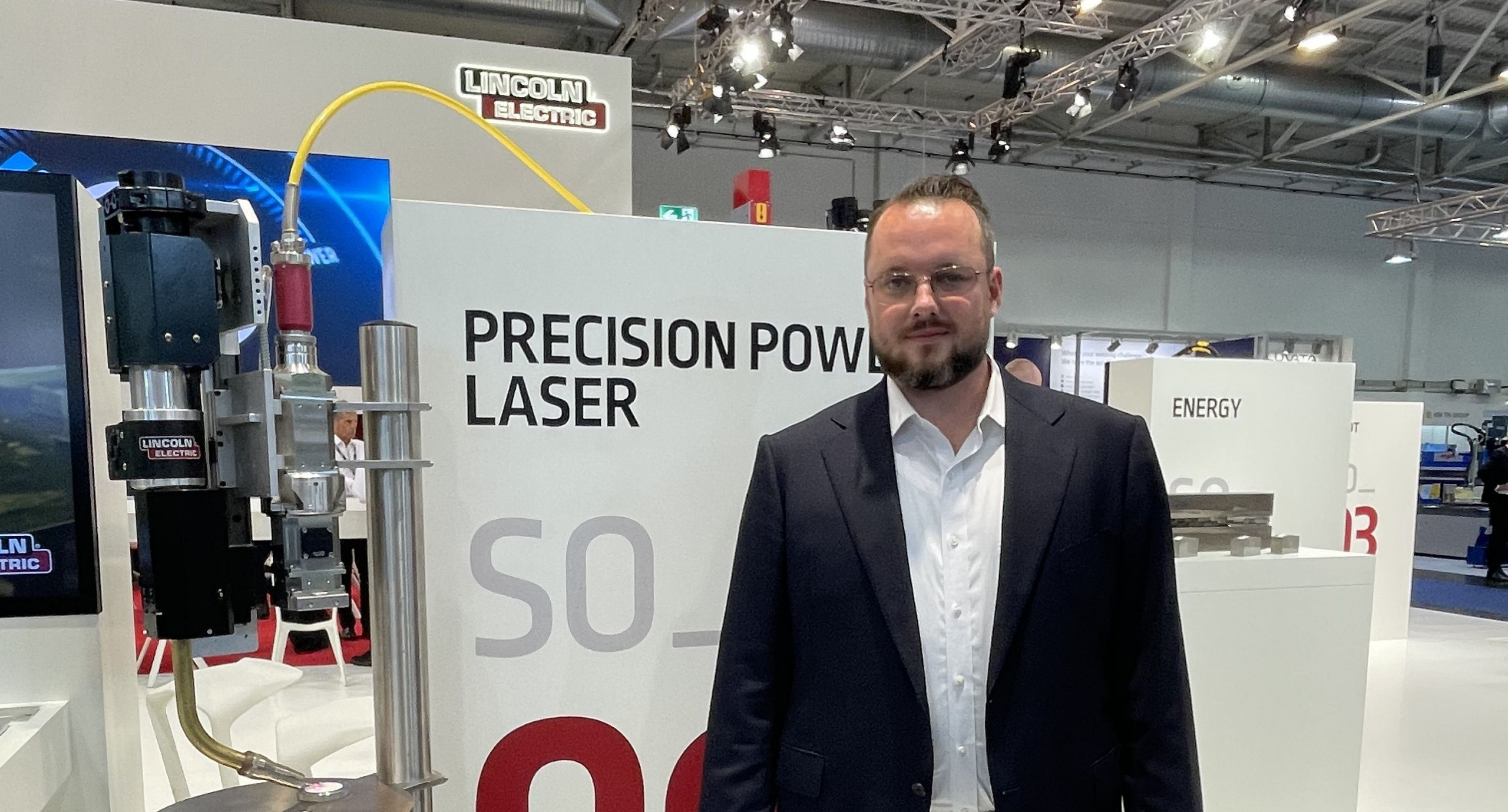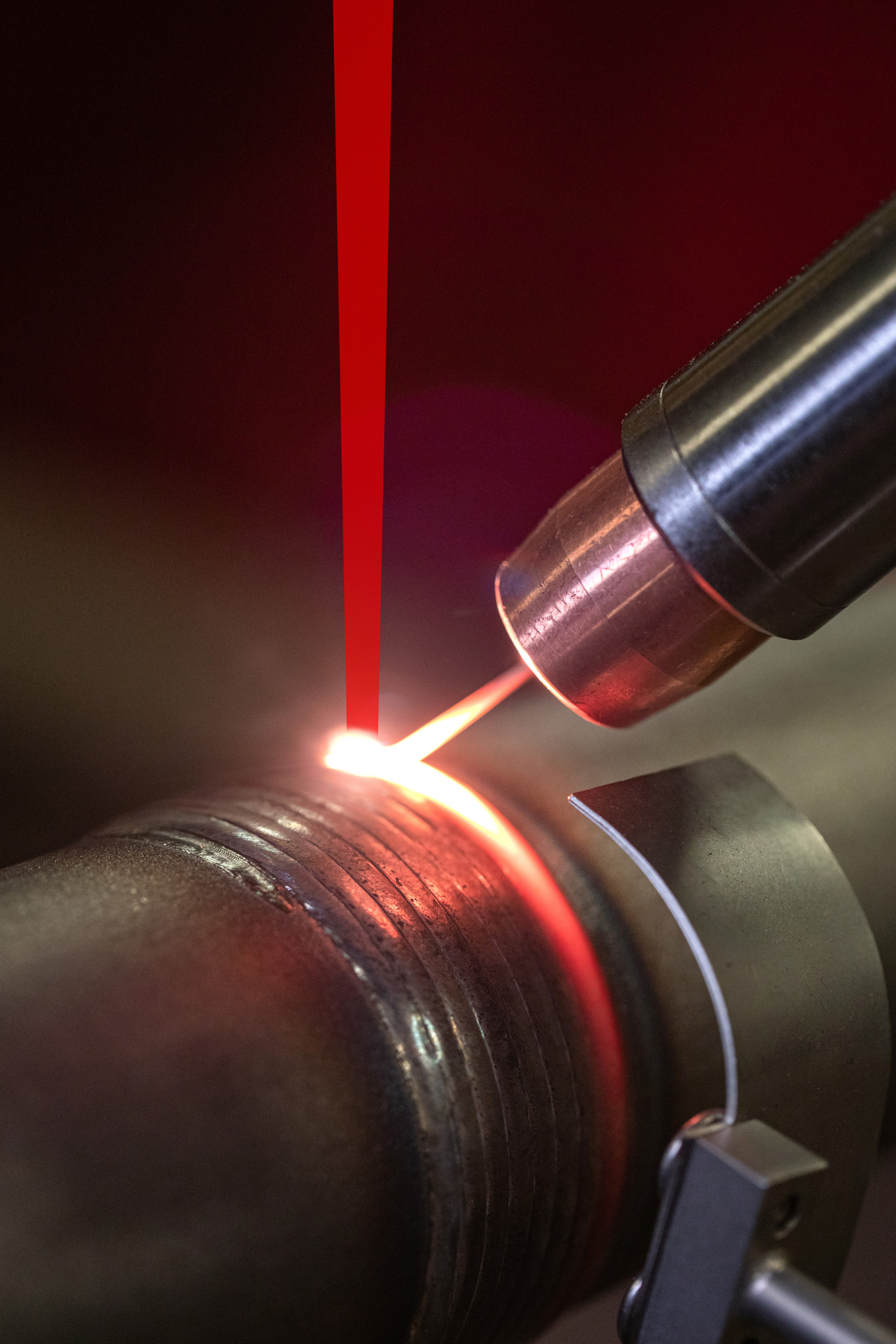
A major U.S. manufacturer of laser welding equipment, Lincoln Electric presented a wide range of precision power laser machines in Essen, Germany, with which it hopes to be particularly successful in Europe. A conversation with David Kilburn, Director Flexible Automation Europe from Lincoln Electric Automation.
You want to be successful with your Precision Power Laser (PPL) machines worldwide, but especially in Europe, in a highly competitive market. How do you assess your prospects here?
Well, Lincoln Electric is the world’s largest manufacturer of automated welding and cutting products. Precision Power Laser PPL is a process we developed at our Cleveland headquarters. This is now to be sold and used worldwide. The main focus will be on the European market. Here we already have demonstration and test facilities. In Germany, these are two plants. One was installed at Laserline near Koblenz, another at Kuka in Augsburg.
How do you assess the international market, and where do you see the competitive advantages of your laser welding systems?
Well, the process offers two different application possibilities. One application we are mainly focusing on here at the Essen show is the process for battery holders for electric vehicles. This means that we have to weld and join more and more aluminum. This market is huge, of course. Everyone knows that there will be more electric vehicles in the future. With the implementation of the new rules in Europe, only electric vehicles will be built from 2030, possibly as late as 2035, which will massively accelerate development in Europe. The industry in Asia already went through this process a few years ago. During the Corona pandemic, they greatly accelerated development there, so that today they are the leader in electric vehicles. The USA and Europe are following in giant strides.
The other very interesting application for exactly the same technology is “cladding”, where we achieve very low mixing rates. This technology is successfully used for steel rolls, in the oil and gas industry, but also in the food industry.

© Lincoln
In your technical documentation and company presentations, you repeatedly refer to the results of your research and development departments. Here you are talking about increased welding speed, lower heat input and increased flexibility of the entire welding process. These advantages of PPL you mention would therefore open up a new world of possibilities in an ever-changing field of materials and their geometries. You also clearly highlight the complete encapsulation of their equipment. Aren’t these qualities that some of your competitors also claim for themselves? Do you still see advantages here?
Well, the production of battery packs today is comparable to the gold rush 200 years ago. At that time, everyone used a different method, a different technique, and in this context assumed that their method was the best until they finally figured out which was the best technique. This is also practiced in a similar way in the automotive industry today. Currently, many different methods are still being tested to fix the batteries in the best possible way. This is exactly what we do with the help of our welding systems.
It is becoming apparent that our technology will capture a significant share due to the achievable welding speed, flexibility, performance and ease of operation. That means when we talk about solutions, for us at Lincoln, it’s not just a word, it’s a promise. We need to be able to show the customer the savings and improvements they can make. We first try to quantify that as best we can. In the next step we then say: Let us test it, we will show it to you either in one of our application centers or in a demonstration plant of our partners.
Another advantage of your systems is the ability to process greater material thicknesses at even higher welding speeds. The result, he says, is better welds that should convince the customer. Attribute these results to a new procedure, the laser PAK system. What is technologically hidden behind the term?
Laser PAK is a Lincoln brand for a standardized cell that we produce in both the U.S. and Europe. It is a complete system that we offer and deliver to customers. The user sets up the system, connects it to power, compressed air and shielding gas, and then welding can start immediately. It is a ready-made module, a plug-and-play system, so to speak.
They also talk about ease of use, more flexibility. Have you also received reactions from your customers in this regard?
Lincoln Electric looks back on a 128-year history. I mention this because we are known in the market and our customers trust us. When we say that something has a certain value or we back something up with numbers, we are always overly cautious and extremely conservative in these statements. This is to ensure that the data is realistic. Because we want to guarantee that if we promise our customers a welding speed of 3m/min, we will achieve it. Here at the fair we also show 3 m/min. In this process, however, we have already reached 8 m/min.
At your booth, you will present in detail the possibilities that PPL machines can offer to automotive manufacturers. Its focus is clearly on the production of electric vehicles. This is shown, for example, by the challenge of safe installation of the accumulators. Also see the use of your products as a good solution for the design of optimal car bodies. Does this mean the complete abandonment of vehicles with combustion engines? Or do you do two-track research and development here?
With this question, you want to learn more about trends in the automotive industry as we see them. Well, the direction of developments is, after all, set by the government, as all vehicles manufactured in Europe must be electric vehicles by 2030. I wonder if that will happen. Well, I have a personal opinion on that, of course, but since I speak for a publicly traded company, I’m not going to comment on that here.
There will clearly be more and more electric vehicles. Is change happening as quickly as hoped? Probably not, the infrastructure such as power grids, power generation also need to be expanded at the same rate. These are all factors that must not be neglected. A lot of energy is needed to provide the cars. There will therefore have to be burners for a while yet, and we serve both.
Is there a big difference in the manufacturing of electric vehicles and internal combustion vehicles?
Today we see a mixture of both. Some manufacturers simply take the frame of an internal combustion engine and place the batteries either in the trunk or in the floor. That’s the old approach. Today, people are beginning to build the frame or chassis and at the same time install the battery in the floor; in the future, the battery will be integrated into the frame. This is clearly the change we are going through. The goal is the safe operation of these vehicles. The customer must be able to rely on this.
Automobiles, of course, are not the only objects of your efforts to achieve good welding results. Please tell us other possible applications from the PPL-Lincoln world?
Yeah sure, everything is going to be electrified whether you like it or not. There are certainly many things being thought about in the research and development departments that are not yet being talked about. But the production of electrically powered aircraft is becoming more and more concrete. Which of course also means further developing new welding technologies to safely process aluminum or galvanized material, for example,
In a next step, to spin this further, apart from airplanes, agricultural equipment and mining machinery will also be electrified. Electrically driven mining machines, for example, can significantly improve working conditions underground, because diesel drives can then be dispensed with there. As you can see, there is still a lot to do. This also applies to welding technology.
Author:
Hans-Ulrich Tschätsch
